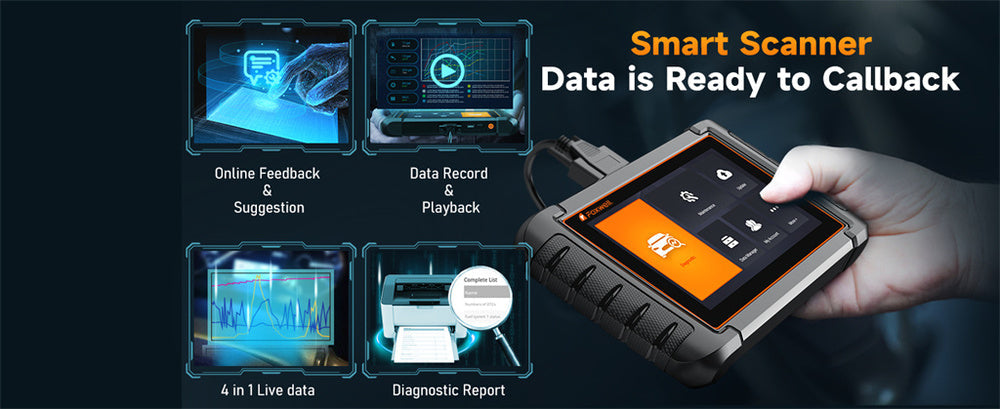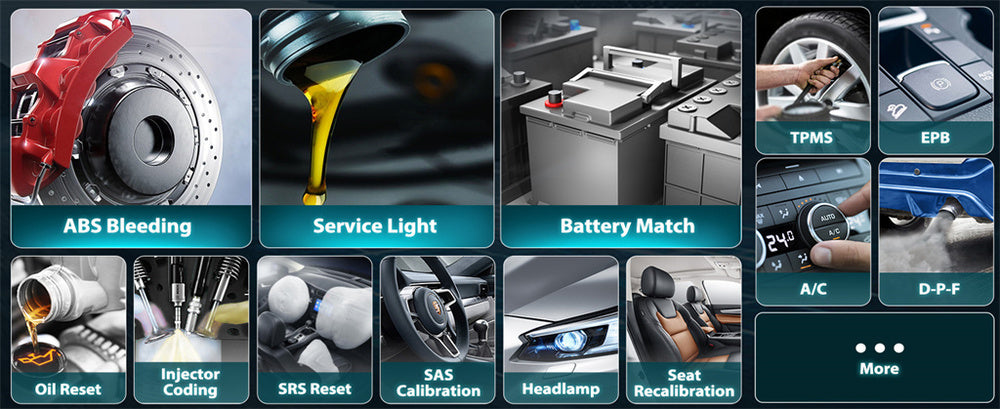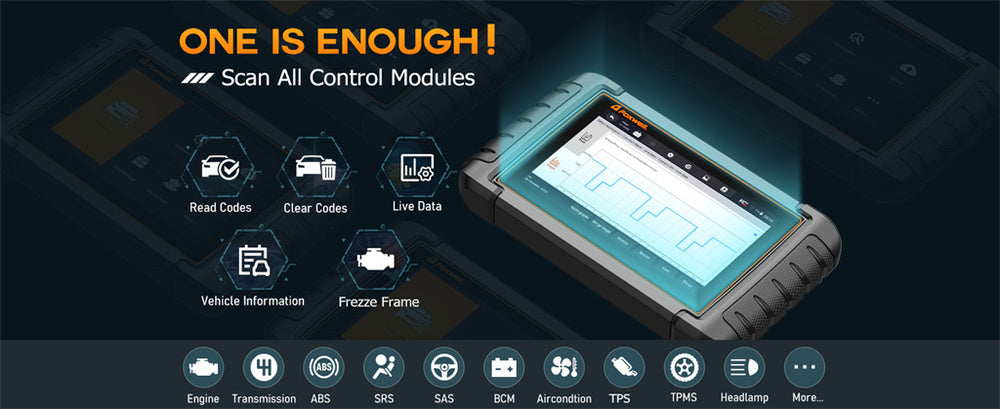Once you purchase a car, ownership doesn't end there - regular maintenance and occasional repairs will unavoidably become part of ownership.
Today's vehicles rely heavily on technology to diagnose problems.
Automotive diagnostic scan tools have become indispensable for those wanting to analyze issues in their car without resorting solely to mechanics for diagnosis.
With so many choices available and each offering different levels of functionality and costs associated with each one available to choose from a bidirectional or unidirectional scan tool could be essential when making the right decision for themselves!
Understanding their differences is crucial when deciding and purchasing one for yourself or another vehicle's ownership experience!
What Are Automotive Diagnostic Scan Tools?

Automotive diagnostic scan tools are devices used to quickly identify issues with a car by reading error codes stored within its computer system.
When something appears on the dashboard - like an engine light warning - mechanics or car owners use these scan tools to quickly find out what caused the issue without needing to inspect every part of their car manually.
Understanding the difference between unidirectional and bidirectional diagnostic scan tools can be vital in understanding why their prices vary and selecting one that best meets your specific needs.
Unidirectional vs. Bidirectional Scan Tools: What's the Difference?
Unidirectional scan tools act primarily as one-way communicators; they can read diagnostic trouble codes (DTCs) and provide basic information on issues within your car, like reading out error codes for check engine lights that come on, such as retrieving what led up to them triggering in the first place.
Such scan tools allow casual users to do basic troubleshooting without deepening into complex repairs - making them valuable tools.
Here are the key features of unidirectional scan tools:
- Essential Diagnostic Functions: Unidirectional tools typically feature limited diagnostic functionality that primarily entails reading error codes and providing limited system information.
- Affordability: Unidirectional tools are cheaper due to their less complex design and limited functionality.
- Ease of Use: These tools are straightforward and user-friendly, perfect for DIY enthusiasts or anyone needing basic diagnostics.
Bidirectional scan tools offer two-way communication between you and your vehicle.
In addition to reading and interpreting codes, this device can send commands directly into its systems and activate or test various components, such as turning on cooling fans, activating an ABS pump, or calibrating throttle bodies—crucial features when diagnosing modern vehicles with complex technology.
Critical features of bidirectional scan tools:
Advanced Diagnostics: Beyond reading error codes, these tools enable you to interact with various systems, test actuators, and reset/reprogram modules.
Component Testing: You can activate specific systems, such as fuel injectors or window regulators, to test their functionality.
Resetting and Calibrating Systems: Bidirectional tools can perform resets on systems like TPMS, ABS, and engine control modules after repairs or maintenance to ensure everything works as intended.
Bidirectional tools excel at vehicle adaptability. Many, like the Foxwell NT809TS, support multiple vehicle brands and models, making them suitable for professional use across various vehicle brands and models. Furthermore, these bidirectional tools often receive software updates, keeping them compatible with cutting-edge car technologies.
Overall, the primary differences lie in functionality, control, and versatility. While unidirectional tools offer introductory information and are more cost-effective, bidirectional tools offer deeper diagnostic depth and the capability of interfacing with car systems, making them indispensable in professional automotive work.
Why Are Bidirectional Scan Tools More Expensive?
Bidirectional scan tool like the Foxwell NT809TS tends to be more costly due to their advanced functionality and intricate hardware requirements.
These tools allow them to read and transmit commands into a vehicle's systems, providing much more control and diagnostic power than their unidirectional counterparts.
Foxwell NT809TS provides professionals with tools to efficiently conduct actuator tests on vehicle components such as cooling fans or fuel injectors to see if they work as intended.
Furthermore, this device can reset systems, including recalibration of Tire Pressure Monitoring Systems or setting oil change reminders after service - this capability makes diagnosis and repair quicker and more precise than ever.
NT809TS also regularly receives software updates to stay compatible with new vehicle models, ensuring it can meet the ever-increasing complexity of modern car systems.
This makes it an invaluable long-term tool. The sophisticated hardware and ongoing software development contribute to its higher price point.
Hardware and Technology Behind Bidirectional Tools
The difference between unidirectional and bidirectional tools lies within their internal components.
Bidirectional tools, like the Foxwell NT809TS, require more sophisticated microprocessors and support for communication standards like CAN (Controller Area Network).
This enables bidirectional tools to interface with more complex car electronic control modules (ECMs) while performing more intricate tasks.
These devices contain not only sophisticated hardware but also intricate software. Manufacturers invest heavily in developing bidirectional tools with software capable of communicating with varying car brands, models, and systems - frequently updated due to new car technologies - therefore, costlier bidirectional tools.
Real-World Applications of Bidirectional Tools
A unidirectional scan tool is ideal for essential car maintenance, such as reading error codes or resetting a check engine light. If you're an occasional car owner needing to troubleshoot simple issues, a unidirectional tool might suffice; they're affordable, user-friendly tools with enough information for basic diagnostics.
However, bidirectional scan tools are necessary if you work professionally on cars or perform more complex repairs. With bidirectional scanners, you can perform tasks such as:
System tests to test the functionality of components. Reprogramming or resetting systems such as airbags, brakes, or engine control modules. They deliberately activate specific components like fuel pumps or headlights for diagnostic purposes.
A bidirectional tool like the Foxwell NT809TS simplifies mechanics' lives by offering direct testing, resetting, and reprogramming capabilities directly from their tool. This ability makes this bidirectional investment an indispensable asset in professional environments.
Who Needs a Bidirectional Scan Tool?
Your individual needs and frequency of car work will determine whether you need a unidirectional or bidirectional scan tool.
Casual car owners: For simple diagnostic tasks or checking engine lights, unidirectional scan tools offer low-cost solutions designed with basic functionality and user-friendliness in mind.
Professional mechanics or advanced users: If you frequently perform complex diagnostics, repairs, or system resets, investing in a bidirectional scan tool like the Foxwell NT809TS should be top of mind. This device can make an invaluable professional tool by controlling multiple car systems at once.
Are Bidirectional Scan Tools Worth Their Costs?
Professional mechanics or experienced car enthusiasts justify the higher price of bidirectional scan tools with time savings and an improved ability to diagnose and fix various vehicle issues quickly and accurately. Testing and controlling a vehicle directly allows them to streamline repairs while improving accuracy - an asset in professional settings.
Unidirectional scan tools offer cost-effective and practical solutions for car owners looking for basic diagnostics. They have enough features for daily needs without adding too much complexity.
Conclusion
Automotive diagnostic scan tools have revolutionized how cars are repaired and maintained.
While unidirectional tools are cost-effective options that simplify simple diagnostics, bidirectional tools offer much greater control and functionality than professional mechanics or serious car enthusiasts require for advanced repairs such as component testing or system resets.
Tools like the Foxwell NT809TS provide advanced options such as component testing or system resets, which makes them indispensable tools for more complex repairs.
Bidirectional tools may be more costly due to their advanced hardware and capabilities. Still, their excellent utility makes them worth investing in for in-depth diagnostics and repairs. Which type you choose ultimately depends on your unique requirements - basic troubleshooting or extensive repairs on vehicle systems.
FAQs
Is a bidirectional scan tool worth it?
Yes, a bidirectional scan tool is worth it for professional mechanics or those who frequently perform complex diagnostics and repairs. It offers advanced features that allow for testing, resetting, and controlling vehicle systems, making it essential for accurate and efficient repairs.
What is the advantage of bidirectional?
The main advantage of a bidirectional tool is its ability to both read data and send commands to the vehicle’s systems, allowing you to perform tests, activate components, and reset or reprogram modules, giving you greater control over diagnostics.
Why is bidirectional important?
Bidirectional tools are important because they offer deeper diagnostic capabilities, allowing mechanics to troubleshoot and fix issues more efficiently by interacting directly with a vehicle's systems, rather than just reading error codes.
You Might Also Like
- Can an OBD2 Scanner Detect if Your Thermostat is Open or Closed?
- Can OBD2 Scanner Read Electrical System?
- Can You Adjust Shift Points with an OBD2 Scanner?
- IOBD reader to check battery health?
- Can OBD2 Relearn My TPMS?




Leave a comment
This site is protected by hCaptcha and the hCaptcha Privacy Policy and Terms of Service apply.